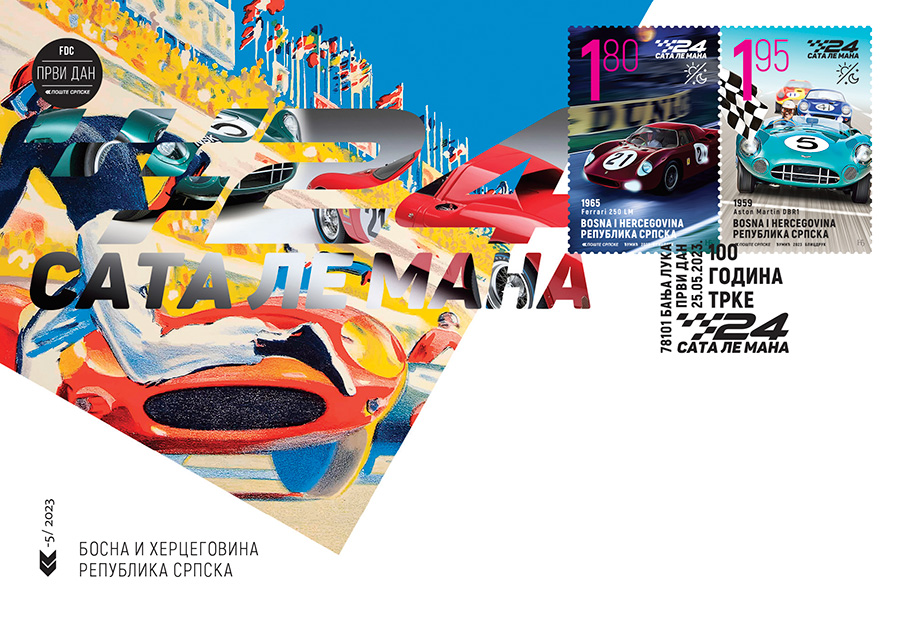100 Years of the Race 24hours Le Man
Title:: 100 Years of the Race 24hours Le Man
Date of Issue: 25.05.2023.
Author: Nebojsa Djumic
Type edition: commemorative
Printing techniques: multicolour offset
Sheet: 10
Paper: muflep 100g
Printing House: Blicdruk, Sarajevo
 Motive: Ferrari 258 LM
Motive: Ferrari 258 LM
Catalogue no.: 933
Perforation: 13 3/4
Face value: 1.95 BAM
Quantity: 10 000
 Motive: Aston Martin DBR 1
Motive: Aston Martin DBR 1
Catalogue no.: 932
Perforation: 13 3/4
Face value: 1.80 BAM
Quantity: 10 000

From the very beginnings of the development of the automotive industry, there have been various types of competition. Of course, most of them involved some kind of racing, which was to determine the car, which was just for fun. Precisely, as a result of such urges, a very specific cup was created, during which the talent and skill of the driver and his machine were on display. The 24th hours of Le Mans has been held since 1923 near the town of Le Mans, in France. It is driven in Circuit de la Sarthe, which contains a mixture of closed public roads and dedicated sections of the race track, in which racing teams must balance the demands of speed with the ability to drive 24 hours without mechanical failure. Circuit de la Sarthe, која садржи мјешавину затворених јавних путева и намјенских дијелова тркачке стазе, у којима тркачке екипе морају избалансирати захтјеве за брзином са способношћу аутомобила да раде 24 сата без механичких кварова.
Drivers and racing teams strive for speed and the avoidance of mechanical damage, as well as the management of the car's consumables, primarily fuel, tires and brake materials. Endurance is also tested, with drivers often driving for more than two hours before another driver can replace them during a stop to rest, get food and drink. There are various long-standing traditions at Le Mans, one of the longest being the waving of the French tricolor to mark the start of the race. It is usually accompanied by the flyover of planes that release blue, white and red smoke. A similar tradition involves the waving of all signal flags by the referees by the runway during the last lap, thus congratulating the winners and all other finishers. Le Mans was the site of the first televised example of a winning driver celebrating by spilling champagne, rather than drinking it. The stormy history of the race "long" 100 years was full of big accidents, triumphs, rules and revolutionary innovations.
Author: Nebojsa Djumic
Publisher: Poste Srpske a.d. Banjaluka
 1371
1371  kontakt@postesrpske.com
kontakt@postesrpske.com


